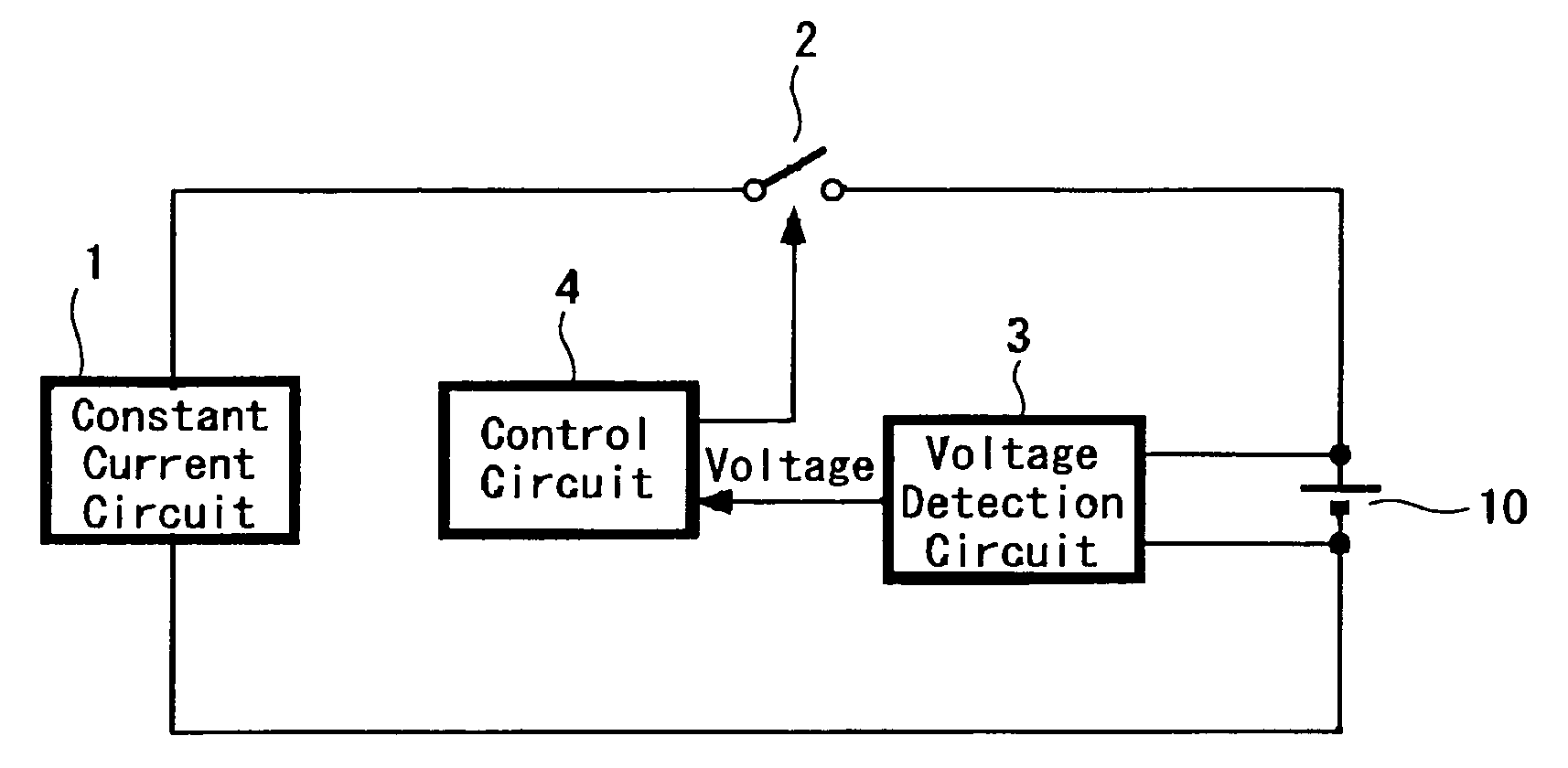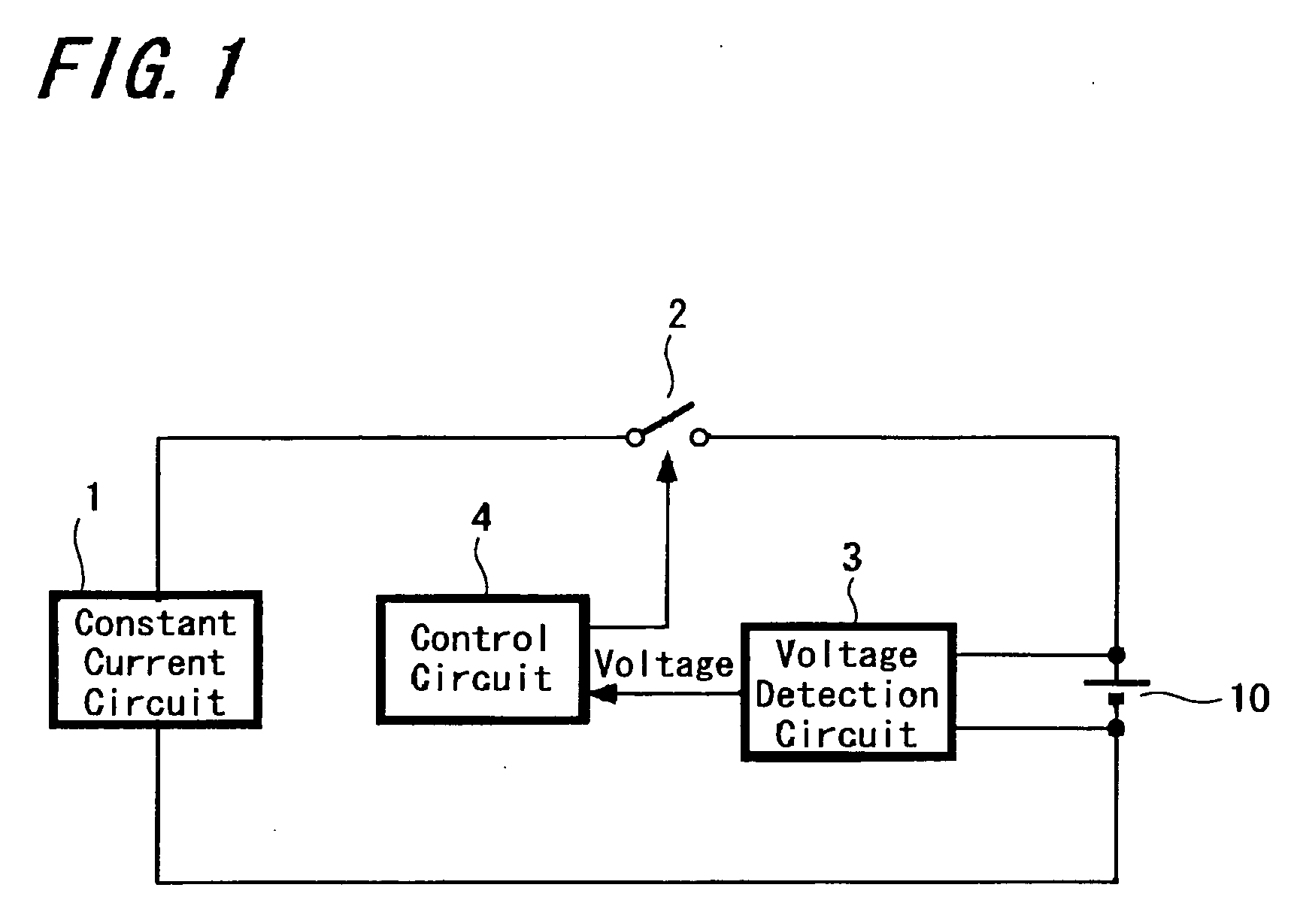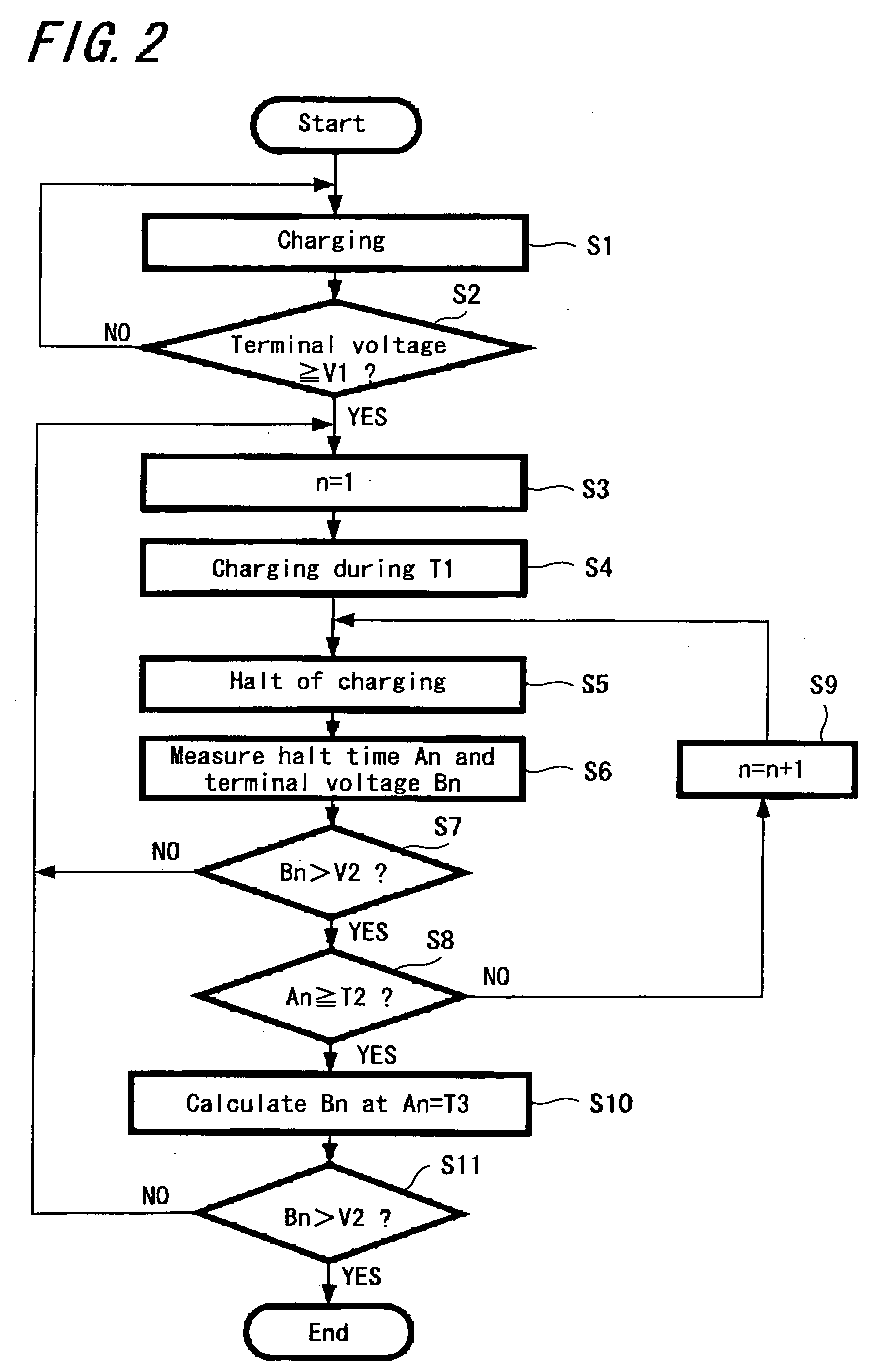Rechargeable battery charging method and apparatus
a rechargeable battery and charging method technology, applied in electric vehicles, electric power, transportation and packaging, etc., can solve the problems of deteriorating performance, long time until charging is completed, and it is not possible to judge the state fully charged, etc., to achieve short time, high accuracy, and short time
- Summary
- Abstract
- Description
- Claims
- Application Information
AI Technical Summary
Benefits of technology
Problems solved by technology
Method used
Image
Examples
Embodiment Construction
[0039] Hereinafter, the present invention is specifically explained using accompanied drawings. FIG. 1 is a block diagram showing a configuration of a charging apparatus to which this invention is applied. This charging apparatus is provided to charge a lithium-ion battery 10 of a full-charged voltage 4.2 (V) and a capacity 2,000 (mAh) and includes a constant current circuit 1, a switch 2, a voltage detection circuit 3 and a control circuit 4.
[0040] The constant current circuit 1 is a circuit to generate a constant current of 1.6 A based on electric power supplied from the outside (for example, commercial power).
[0041] The lithium-ion battery 10 to be charged is connected to the constant current circuit 1 through the switch 2. The switch 2 is controlled to be ON and OFF by the control circuit 4.
[0042] The voltage detection circuit 3 is a circuit to detect a terminal voltage of the lithium-ion battery 10. A detected output of the voltage detection circuit 3 is sent to the control ...
PUM
 Login to View More
Login to View More Abstract
Description
Claims
Application Information
 Login to View More
Login to View More - R&D
- Intellectual Property
- Life Sciences
- Materials
- Tech Scout
- Unparalleled Data Quality
- Higher Quality Content
- 60% Fewer Hallucinations
Browse by: Latest US Patents, China's latest patents, Technical Efficacy Thesaurus, Application Domain, Technology Topic, Popular Technical Reports.
© 2025 PatSnap. All rights reserved.Legal|Privacy policy|Modern Slavery Act Transparency Statement|Sitemap|About US| Contact US: help@patsnap.com



